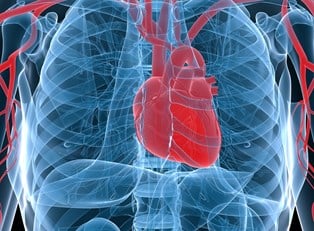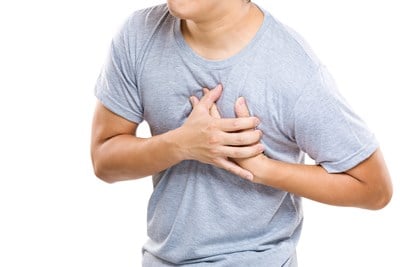A sufferer of acute coronary syndrome is someone with angina symptoms resulting from the rapid narrowing of a coronary artery. This serious medical condition results in reduced blood flow, along with the oxygen it carries, to the heart. This can trigger angina or a heart attack. ACS is a general term which represents several conditions such as non-Q wave myocardial infarction or heart attack, and unstable angina.
What Is Angina?
Angina is a term referring to chest pains which involve the heart. Unstable angina is chest pain resulting from the lack of blood flow to the heart but involving no damage to the heart muscle itself. It can happen during physical exertion or even when you are at rest. Stable angina pain usually goes away when you rest or take your angina medicine. Unstable angina pain does not go away with medicine or rest. It may worsen or occur at times it did not before. Unstable angina is not an actual heart attack. However, acute coronary syndrome symptoms are a warning sign that a heart attack could happen in the near future, therefore it needs to be treated promptly.
Common Acute Coronary Syndrome Symptoms
Acute coronary syndrome occurs due to the narrowing or blockage of the arteries by plaque. Plaque consists mainly of cholesterol which can build up in the arteries over time. This condition is known as coronary artery disease and can lead to acute coronary syndrome. Acute coronary syndrome symptoms include: chest pain, pain in the jaw or neck, nausea, vomiting, sweating, or dizziness. The chest pain can feel different for everyone. It may feel like squeezing or pressure. Your chest may feel heavy or tight. You may also have a dull ache or burning sensation. Some people do not report chest pain but have some other type of acute coronary syndrome symptoms. An electrocardiogram can reveal whether you have had a heart attack or have angina. It measures electrical signals which represent the rhythm of your heart. Tiny pads are taped to your chest and other body areas. The pads are at the end of cords which are connected to a machine that graphs the signals onto a roll of paper. The doctor will then search for specific changes on the graph to determine if your heart is getting enough blood or you are in the midst of a heart attack. The doctor may also order a blood test to check for a spike in cardiac enzymes. The heart releases these chemicals after it has been damaged.
The risk of heart death, recurrent myocardial infarction or heart attack, or a trend towards that stage is the highest during the initial two months after the acute attack. After patients clear this threshold, the risks are similar to that of patients suffering from chronic stable coronary disease rather than a heart attack. Because this condition is associated with the presence of atherosclerotic plaque, surviving patients will live with an elevated risk of a recurring acute coronary syndrome attack, such as heart death or stroke. A wide variety of acute coronary syndrome treatment options are available to protect the heart and reduce the risk of recurrent attacks. To receive appropriate acute coronary syndrome treatment, the physician needs to become aware of the patient's symptoms. Many of the symptoms are very similar to those of a heart attack. If the condition is not treated promptly and correctly, an actual heart attack will take place. It is vitally important to take the symptoms very seriously. If you suspect you or a loved one has the symptoms, seek medical attention immediately.




